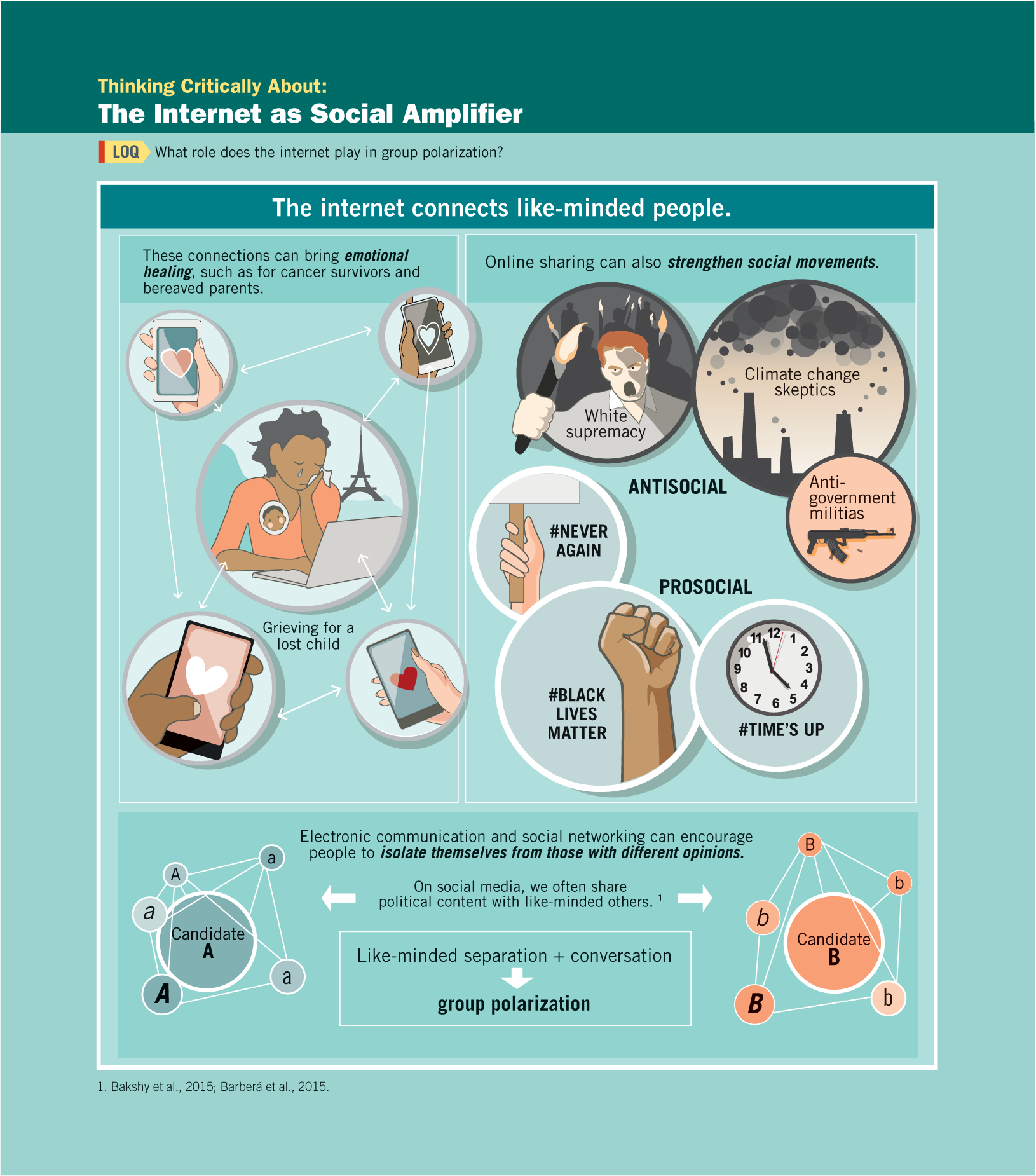Chapter 16. The Internet as Social Amplifier
Infographic
Infographic Activity
by David Myers and Nathan DeWall
true
true
Thinking Critically About: The Internet as Social Amplifier
Within the internet’s echo chamber of the like-minded, views become more extreme. Sometimes that phenomenon can work for good, sometimes for bad. (This infographic is from Psychology in Everyday Life, 5th Edition, Chapter 11.)
Quiz
Quiz
Question 16.1
UxPA0KuorMBNaIPSv/7EqgsbH3MHZuG2Tn3cXz6E2FfrdCAPIq4KOFIkFVEtK2Q5gecXRV8gEuIpByYjm1FvZFg+y8xQeXeUR/v4PA==Digital discussions tend to isolate like-minded people. This selective exposure to those with similar views and biases prompts existing attitudes to intensify.
Question 16.2
4bNgEft/eJPsh8HBtGiW2YHi7zExlC/RG+9yNbS5RspqHcUxqDwrpmbw9R7rR/bl40dg5oLVpo4TQDPqQkEVgQc88N1Yzfc827Fvg858HpowlHuE+eirJDf4lIxaZ8rw9DiO3WgkNVvtDF6wMA2R7hQfffk63ZRWSfuRs1fc77tmKzX64Su8VKn3IDW4GUbTDcNFqrTY+2sVM8ppyZFl6g==On the internet, like minds can congregate via social media and through selective exposure to kindred-spirited views—echoing each others’ ideas and attitudes. That can work for either good (as when people find support for coping with health challenges or want to gather for a good cause) or ill (as when people find reinforcement for their hatreds).
